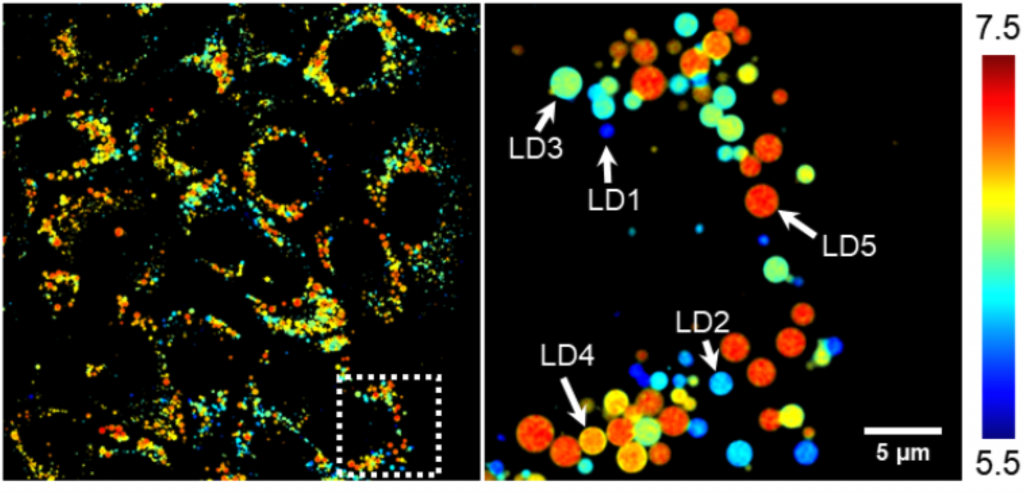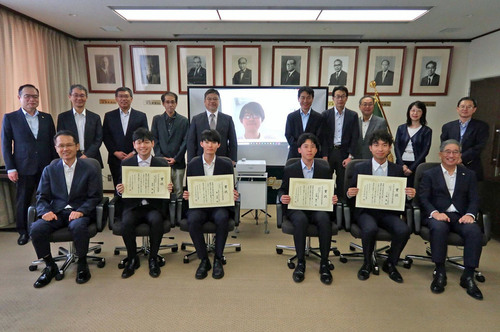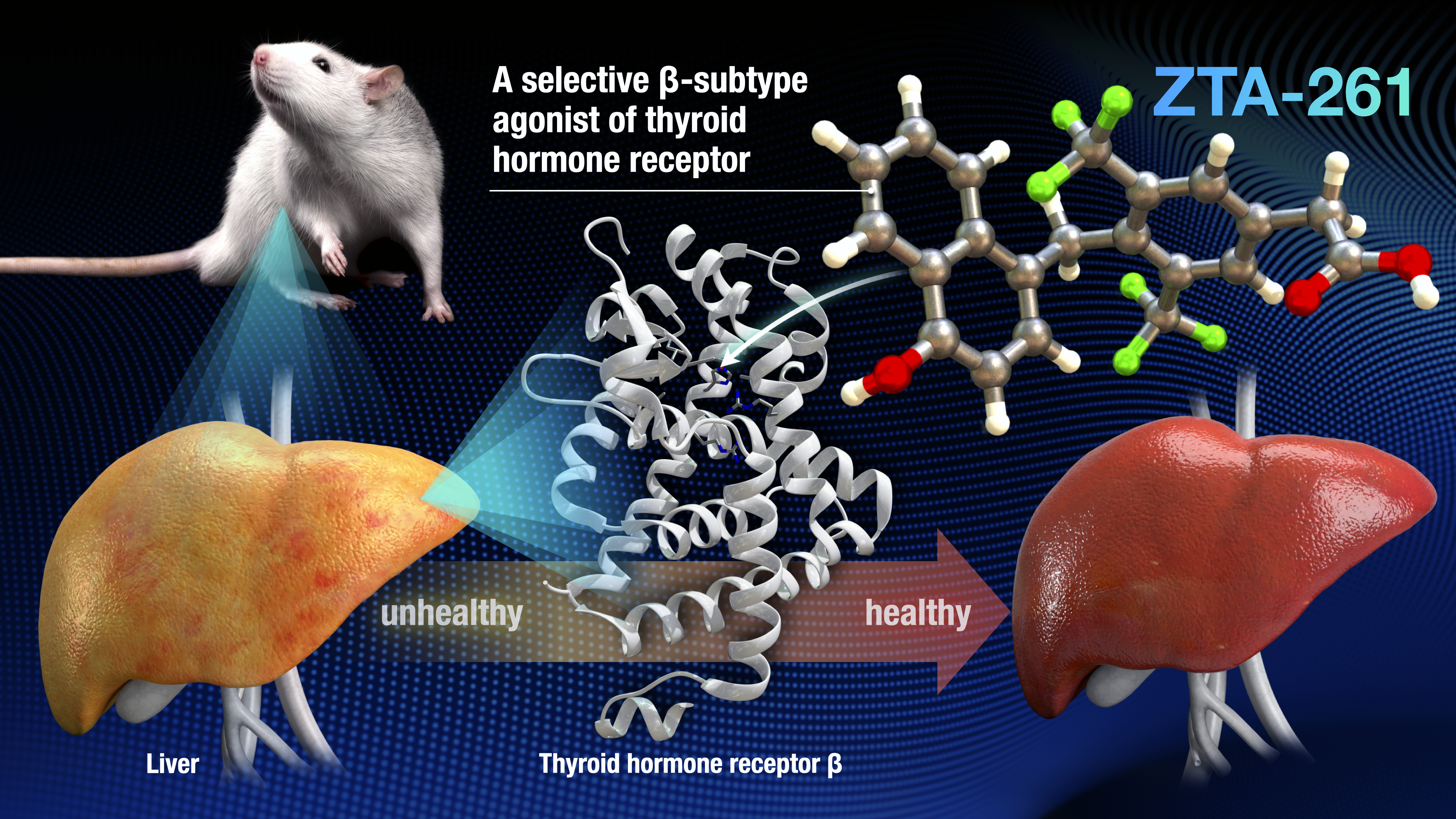
Study provides the first visual evidence of lipid breakdown at the single-droplet level in living cells
A research team has developed a fluorescent probe that allows scientists to visualize how individual lipid droplets break down inside living cells in real time. The probe changes its fluorescence properties depending on the chemical composition of each droplet, which allows researchers to observe not only their location within cells, but also their metabolic activity during lipid breakdown. The findings, published in the Journal of the American Chemical Society, may contribute to the development of new strategies to treat metabolic diseases such as obesity and diabetes, as well as cancers associated with abnormal lipid metabolism.
“Lipid droplets are cellular organelles that not only store excess lipids but also play critical roles in lipid metabolism. However, understanding how individual droplets function has been challenging,” Professor Shigehiro Yamaguchi, from the Institute of Transformative Bio-Molecules (ITbM) at Nagoya University, explained.
“Traditional methods require destroying cells and can only measure the average behavior across many droplets. This approach misses important differences and leaves key questions about how cells regulate their energy reserves unanswered. Our organic fluorescent probe LipiPB Red fills this gap, allowing us to observe functional differences among individual droplets for the first time.”
ATGL enzyme drives varied lipid droplet breakdown rates in liver cancer cells
The fluorescence lifetime of LipiPB Red—how long it continues to emit light after absorbing light energy—depends on the type of lipid molecules inside each droplet. When triglycerides (the main storage form of neutral lipids) are the major component, the probe shows longer fluorescence lifetimes. As they are enzymatically degraded into diglycerides (partially hydrolyzed forms of triglycerides), the fluorescence lifetime becomes shorter. By monitoring these changes, the researchers could identify which lipid droplets were actively breaking down.

Using LipiPB Red, the team observed that lipid droplets in liver cancer cells break down at markedly different rates, even within the same cell, a phenomenon not seen in other cell types. Scientists had assumed that all droplets within a cell would behave similarly, which was true for other cell types. Further experiments revealed that an enzyme called ATGL (adipose triglyceride lipase) is responsible for these differences.
“ATGL is already known to be important for converting triglycerides to diglycerides during lipid droplet breakdown, but we found that its activity differs dramatically among individual droplets within the same cell,” said Professor Masayasu Taki from the Institute for Glycol-core Research (iGCORE), Gifu University.
“When ATGL was inhibited, the differences disappeared, confirming its central role. These findings indicate that liver cancer cells metabolize lipids in a uniquely heterogeneous manner, which may be linked to their abnormal energy regulation.”
Direct visualization of step-by-step lipid degradation
The team also achieved the first direct visualization of the sequential lipid breakdown process in real time. They observed that lipid droplets are first degraded enzymatically through lipolysis, followed by further breakdown via autophagic pathways (lipophagy). Although how lipid droplet breakdown is regulated remains controversial, LipiPB Red allows direct observation of the process within living cells.
LipiPB Red also provides a powerful new tool to study fundamental questions about cellular energy regulation and could reveal how cells make decisions about when and how to access their energy reserves during stress, exercise, or disease.
“We can now study how different treatments or conditions affect cellular lipid metabolism at a level of detail that was not possible before. This technology will advance our understanding of lipid metabolism and could help develop new therapeutic approaches for metabolic disorders and cancer,” Professor Taki said.
Paper information:
Junwei Wang, Keiji Kajiwara, Manish Kesherwani, Florence Tama, Yuki Ohsaki, Shigehiro Yamaguchi, Masayasu Taki. (2025) Single-cell fluorescence analysis of lipid droplet compositional dynamics during triacylglycerol catabolism. Journal of the American Chemical Society, 147(45). https://doi.org/10.1021/jacs.5c11742
Funding information:
This work was supported by JST CREST, JSPS KAKENHI grants, The Uehara Memorial Foundation, Takeda Scientific Foundation, Takeda Medical Research Foundation, Kazato Research Foundation, and Orange Fund for the Commemoration of Hokkaido Hepatitis B Lawsuits.
Research contact:
Shigehiro Yamaguchi
Institute of Transformative Bio-Molecules
Nagoya University
Email: yamaguchi@chem.nagoya-u.ac.jp
Masayasu Taki
Institute for Glyco-core Research
Gifu University
Email: taki.masayasu.s8@f.gifu-u.ac.jp
Media contact:
Merle Naidoo
International Communications Office
Nagoya University
Email: icomm_research@t.mail.nagoya-u.ac.jp
Top image:
LipiPB Red shows longer fluorescence lifetimes in stable lipid droplets (red) and shorter lifetimes as they undergo degradation (blue). This probe revealed that lipid droplets sequentially degrade, where lipolysis precedes lipophagy. Credit: Issey Takahashi, Nagoya University






